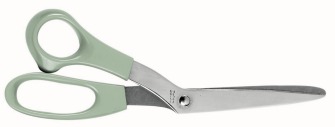I’m printing slightly enlarged versions of the pages of a score by Philip Glass that I will play at the LPR Glass-birthday event later this month. The physical resizing, repaginating, and relineating of written music sometimes makes practicing and performing easier.
 For a long time, this work was accomplished with photocopying, scissors, or paper cutter, and adhesive tape. The pianist Judith Gordon called it “arts and crafts.”
For a long time, this work was accomplished with photocopying, scissors, or paper cutter, and adhesive tape. The pianist Judith Gordon called it “arts and crafts.”
Some outsized pasteups were made to occupy the entire width of a piano’s music rack. Ten letter-sized sheets of the first movement of my copy of Edward Steuermann’s Sonata were mounted five-over-five on a single large cardboard. (No page turns, and no page turner!)
Orchestra musicians may make a physical cut between lines, horizontally slicing through a page in a bound part. That can allow the top part of the page to be turned at a convenient moment, revealing what’s next — a workaround for an awkward page break.
Robert Mann‘s string-quartet parts were notably hand-crafted, often considerably reduced in size and taped together, minimizing the number of page turns.
Calling this “arts and crafts” might seem just a clever turn of phrase, but the interconnection of hand, mind, heart, and spirit is great. After preparing an improved layout for a piece, I sometimes find I can play the music better right away.
Laptops, new monitors and technology are changing all this. In much earlier times, composers or copyists prepared most parts. (Separate wind parts were needed for Bach’s two Leipzig churches because the two organs were quite differently pitched…)
Hand copying music was a means of musical learning — like the copying of paintings by art students. Musicians such as Brahms spent hundreds of hours copying out rare music for use and education.
When Gustav Mahler or George Szell reorchestrated classical symphonies it necessitated that an orchestra librarian or a copyist handwrite inserts for the musicians’ parts. (Recent research is identifying Mahler’s copyists…)
After a recording session, I spend hours listening to the material I record. Eventually I make an editing-plan. After all that listening, and contemplating what goes with what, my playing of the pieces improves — without further practice or performing. The hands-on (hands-off?) work with the musical material affects me.
Right now, I’m preparing two-piano arrangements of several pieces by Meredith Monk. I figure out which material goes to each player and notate my version.
I think my playing of the music is improving — even though I haven’t started practicing it.

This is a really interesting post and raises many points. Copying out music is really a good way of learning, at the moment I am copying out the solo part of Bartok’s 2nd Violin Concerto.
Regarding cutting up music, while playing in an ensemble for a dance performance, the cellist in front of me had separate sctions chopped up in what appeared to be an almost random order but it made perfect sense to her. In fact it looked like an aleatoric piece, such as Stockhausen’s Klavierstück XI.
However reading your posts recently, as you have played from photocopies of Duckworth’s handwritten score, chopped-up parts, printed music, it seems that you have no preference to the type of score whatsoever. Does this mean that computer engraved parts (such as Finale or Sibelius) are no more preferable that handwritten music? I have often wondered if performers are equally comfortable with hand written scores because now it seems everyone uses a computer. But is this just convenience and far from essential?